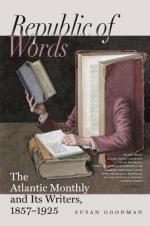For a victory of course it is. Nothing in England can yet resist these high-born, dissolute, reckless Cavaliers of Rupert’s. “I have seen them running up walls twenty feet high,” said the engineer consulted by the frightened citizens of Dorchester: “these defences of yours may possibly keep them out half an hour.” Darlings of triumphant aristocracy, they are destined to meet with no foe that can match them, until they recoil at last before the plebeian pikes of the London train-bands. Nor can even Rupert’s men claim to monopolize the courage of the King’s party. The brilliant “show-troop” of Lord Bernard Stuart, comprising the young nobles having no separate command,—a troop which could afford to indulge in all the gorgeousness of dress, since their united incomes, Clarendon declares, would have exceeded those of the whole Puritan Parliament,—led, by their own desire, the triumphant charge at Edgehill, and threescore of their bodies were found piled on the spot where the Royal Standard was captured and rescued. Not less faithful were the Marquis of Newcastle’s “Lambs,” who took their name from the white woollen clothing which they refused to have dyed, saying that their hearts’ blood would dye it soon enough; and so it did: only thirty survived the battle of Marston Moor, and the bodies of the rest were found in the field, ranked regularly, side by side, in death as in life.
But here at Chalgrove Field no such fortitude of endurance is needed; the enemy are scattered, and, as Rupert’s Cavaliers are dashing on, in their accustomed headlong pursuit, a small, but fresh force of Puritan cavalry appears behind the hedges and charges on them from the right,—two troops, hastily gathered, and in various garb. They are headed by a man in middle life and of noble aspect: once seen, he cannot easily be forgotten; but seen he will never be again, and, for the last time, Rupert and Hampden meet face to face.




